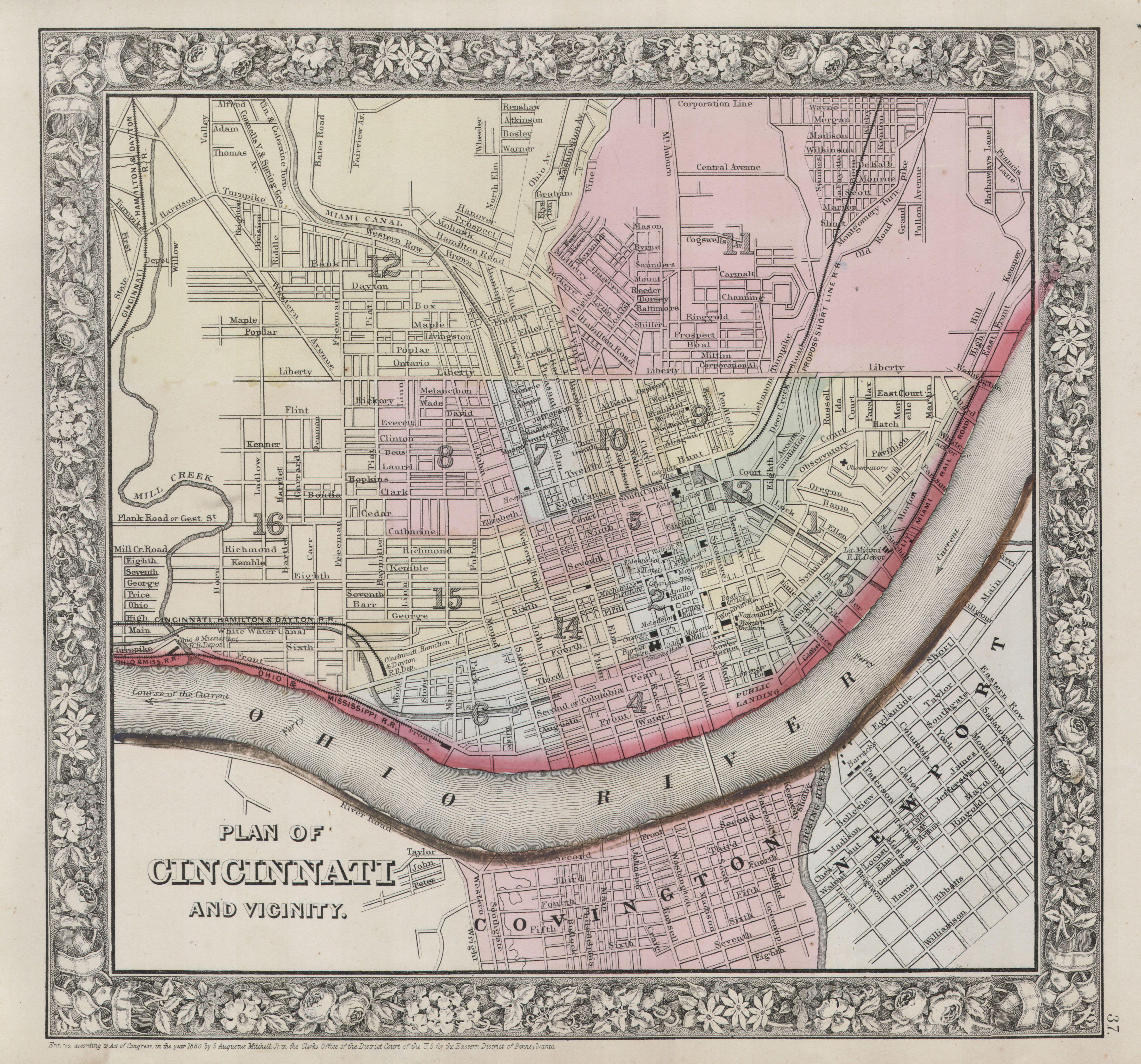Cincinnati in 1841 with the Miami and Erie Canal in the foreground
By Klauprech & Menzel -- Printer Of plates
Since moving to Cincinnati last year, I've been taking time to do some research on the city and its environs. Since I'm always looking for a great story, the 1849 cholera epidemic caught my eye. This was the third major cholera epidemic of the 19th century and began in Russia. By the 1840s, travel was relatively easy (compared to the previous century). Steamships had been traversing the Atlantic for nearly two decades and had been making their way along rivers for nearly four decades.
The Alex Scott, Built 1842, Jeffersonville, IN
The epidemic spread across Europe and made its way to the British Isles. The Irish were especially hard hit, since many had already been seriously weakened by the potato famine. Those that could afford to boarded ships and flooded into American ports- especially New York City and New Orleans. Cholera thrives in humans and easily spread in the dirty and crowded ships.
If you don't know much about cholera (like me), here is a brief description from the CDC:
Cholera is an acute, diarrheal illness caused by infection of the intestine with the toxigenic bacterium Vibrio cholerae serogroup O1 or O139. An estimated 2.9 million cases and 95,000 deaths occur each year around the world. The infection is often mild or without symptoms, but can sometimes be severe. Approximately one in 10 (10%) infected persons will have severe disease characterized by profuse watery diarrhea, vomiting, and leg cramps. In these people, rapid loss of body fluids leads to dehydration and shock. Without treatment, death can occur within hours.
Imagine traveling in the cramped, dark hold of a ship with hundreds of other people. Clean water would be lacking, and bathroom facilities would be nearly nonexistent. The cholera bacteria made these ships into floating colonies of their own and took the opportunity to spread across the United States once they hit land.
In 1849, Cincinnati, Ohio was a city of over 115,000 residents. Located across the Ohio River from Kentucky, it is the most southwestern city in the state and abuts Indiana. The Ohio River creates the southern borders of Ohio, Indiana, and Illinois and merges with the Mississippi River near the intersection of Kentucky, Illinois, and Missouri. (For a great map, click here).
Cincinnati’s nearly direct connection to New Orleans (and the Great Lakes to the north via canals) made it an important center for imports and exports- including people. In fact, between 1840 and 1850, the population had risen from 46,000 to 115,000.
1864 Mitchell Map of Cincinnati, Ohio
In the 19th century it was easy to blame many of the country’s problems on immigrants*. At that time, the Germans and Irish had massive targets on their backs and it was easy to blame them for epidemics. At the time, Americans were especially anti-Catholic. In St. Louis, nearly 4/5 of the people who died from cholera were Catholic. This shows just how low-income Catholics were. While hospitals did see many more foreign-born patients during the epidemic, these numbers are misleading. Most of the middle- and upper-class were able to afford to stay at home and have a physician visit them there.
While I was researching a 1912 strike in my hometown, I learned just how terrible the conditions of immigrant homes could be. This is an excerpt from that paper. I could be discussing conditions in nearly any city in America at the time.
A New York State commission’s final report found that the standard of living on the South Side of the Mohawk River in Little Falls was such that, “existing conditions present a problem which is of public concern, and therefore demands further investigation. The area was overcrowded with 1,178 people living in 493 rooms and offered few conveniences. “Water closets” were few and far between and were often located in basements and shared by neighbors. Many homes had no water connection, sewage was let directly into local streams, and cellars were filled with waste, “giving rise to foul and unhealthful odors”. “The walls and ceilings are constantly damp and unsanitary, keeping the air of the room chilled and soggy”.
While I discussed tuberculosis in this paper, these are the perfect conditions for a cholera outbreak.
To be continued…
The Cholera Years: The United States in 1832, 1849, and 1866 Charles E. Rosenberg
http://www.ph.ucla.edu/epi/Snow/pandemic1846-63.html
https://www.cdc.gov/cholera/general/index.html
https://en.wikipedia.org/wiki/Steamship (yeah, I use it! But I follow up with their sources)
*My family came from Slovakia in the late 19th century and they were targets at the time. Most likely, if you are an American, no matter whence your family came, they were at one time targets of hatred and prejudice. I hope that the people of our country will remember that as we fight against the same hatred and prejudice that is occurring now. Visit https://immigrantarchiveproject.org/ to find out what you can do to help.



Powerful Herbal treatment is 100% guarantee for HSV cure, the reason why most people are finding it difficult to cure HSV 1 or 2 is because they believe on medical report, drugs and medical treatments which is not helpful to cure HSV and hasn't proved any sign of helping. Natural roots/herbs are the best remedy which can easily eradicate herpes forever. I never believed it until I was helped and cured of my 16 months genital herpes with natural herbal medicines from Dr OGU Patrick. Where other medical prescribed drugs and treatments failed, Natural herbs helped saved me from Genital herpes permanently and i am so grateful for this. You can also get help from this great and powerful herbs can also contact Dr OGU Patrick through via this email: drogugusolutionhome@gmail.com , Text or call him via : +1 719 629 0982
ReplyDelete